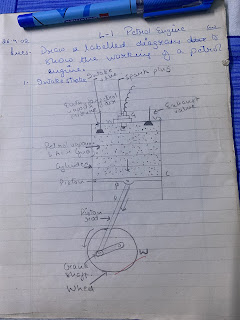Universe
Q Draw the diagram of Ursa Major and Orion?
Q Give two points of difference between galaxy and constellations?
- Galaxy
- Galaxy is a vast collection of billions of stars.
- There are so many galaxies in this universe.
- Constellations
- Constellation is a collection of few number of stars in a definite pattern.
- Only 88 constellations are known so far.
Q Define 1 light year? How many meters make 1 light year? And how many light-years make one parsec?
- The distance traveled by the light in one year is called as one light year.
- One light year equals 9.46 into 10 to the power of 15 meters.
- 1 parsec equals 3.26 light years.
Q Explain the following steps in the lifecycle of a star? Formation of a protostar? Formation of a star from protostar? Formation of a giant star from a star?
- Formation of a protostar.
- The formation of a protostar begins from a huge gaseous cloud mainly of hydrogen and some helium, and at a very low temperature of -1, 73°C.
- Due to gravitational force the cloud starts contracting.
- Contraction results in the formation of small ball shaped cloud, called protostar.
- Protostar emits no light.
- Formation of star from protostar
- Contraction in the protostar continues.
- The hydrogen atoms collide with one another more frequently.
- Temperature rises from -1,73°C to 10 to the power 7°C.
- Nuclear fusion reactions of hydrogen start taking place.
- Energy liberated due to the nuclear fusion. Reactions make the protostar, and it becomes a star.
- The star is now in equilibrium under two forces acting on it.
- Gravitational force trying to compress the gases.
- The internal force due to nuclear energy, which stops the gaseous matter from collapsing.
- Formation of red giant star from star.
- The hydrogen present in the core of the star gets converted into helium.
- The nuclear fusion reactions stop.
- The pressure in the core decreases and the core shrinks under its own gravity.
- Nuclear fusion reactions continue to take place in the outer shell.
- The pressure in the outer shell increases, and therefore its size increases.
- The autoThe pressure in the outer shell increases, and therefore it’s size increases.
- The outer shell expands considerably while the core shrinks.
- The star becomes Big and its color changes to red. It is called as red giant star.
Q Draw the diagram of constellation?
- Alpha Centuri
Q What is a galaxy? How many galaxies are estimated to be in the universe? What is the average no stars in each galaxy?
- Galaxy is a vast collection of billions of stars.
- There are 10 to power 11 galaxies in the universe and 10 to power 11 stars in each galaxy.
Q Name the physical quantity whose one of the units is light year?
- Distance
Q Name two galaxies?
- Milky Way galaxy
- Andromeda galaxy
Q Two constellations are seen in the sky having seven prominent stars. Which one of the two appears in the winter season?
- Orion.
Q In which season of the year are the constellations, Scorpio and Orion visible?
- Scorpio – summer
- Orion – winter
Q Which of the following are constellations?
- Pleiades
- Scorpio.
- Great bear.
Q What is the number of prominent stars in the Orion?
- Seven
Q Complete the following?
- Orion is a constellation
- Sun is a star
- Milky Way is a galaxy.
- Earth is a planet.
- Moon is a satellite.
Q The distance between a pair of galaxies , A and B is X light-years and that between another pair of galaxies C and D is 2X light-years. In which pair the two galaxies be receding from each other with greater speed? State the law and name the scientist who purposed it?








Comments
Post a Comment